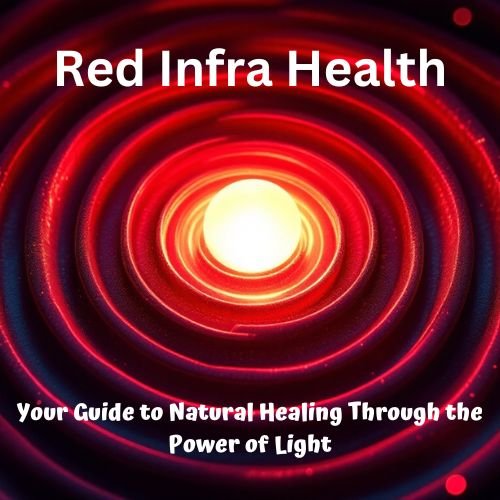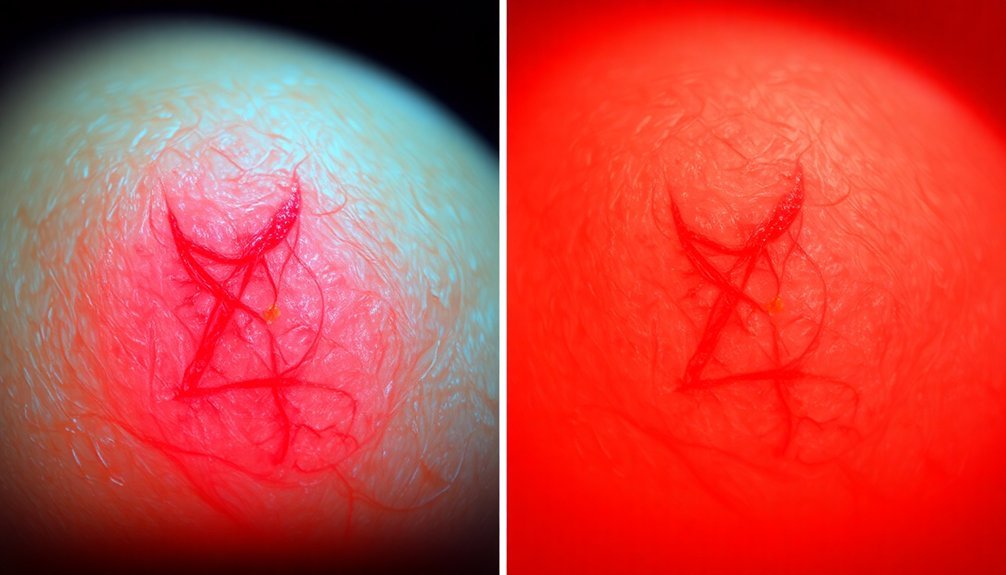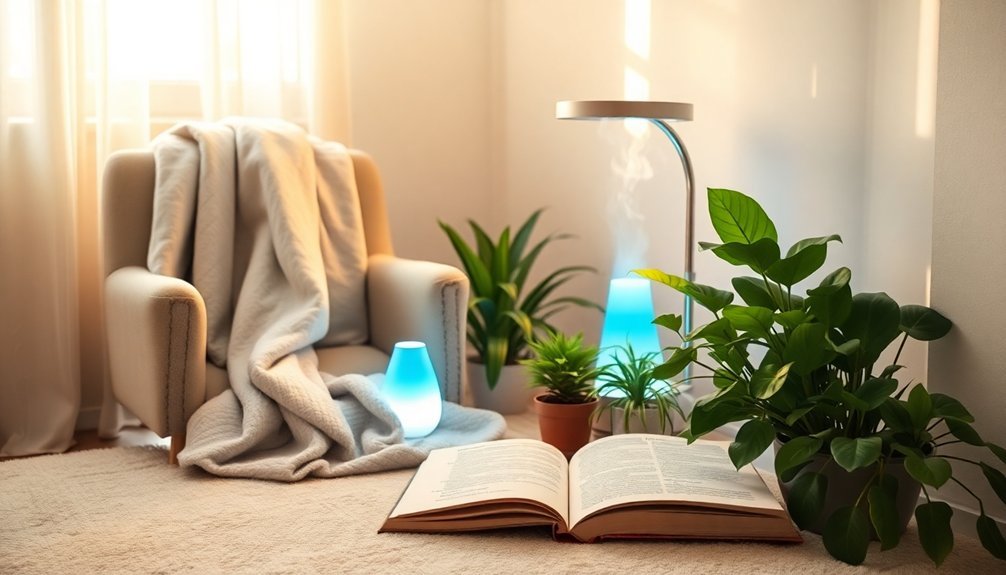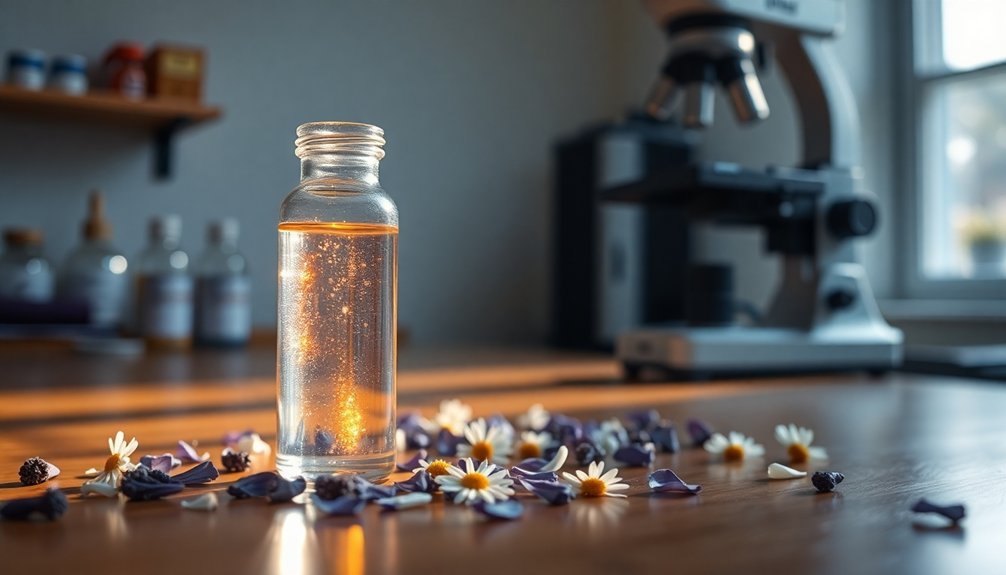You'll get the fastest tissue recovery by combining red light (630-660nm) with near-infrared light (810-850nm). The red wavelengths work on surface-level healing, boosting collagen and repairing skin, while near-infrared penetrates deeper to accelerate muscle and joint recovery. For maximum healing speed, pair 660nm with 810nm or 830nm wavelengths – this combination targets both superficial and deep tissues simultaneously while enhancing ATP production and cellular regeneration. Specific wavelengths like 850nm excel at reducing inflammation, which further speeds recovery. Understanding these ideal wavelength combinations can reveal even more powerful healing potential.
Light Therapy Wavelength Basics

Light therapy harnesses specific wavelengths of light to promote healing and reduce inflammation in the body's tissues. When you're looking to understand how light therapy works, you'll need to focus on the "biological window" – wavelengths between 600nm and 1000nm that can effectively penetrate and influence your body's cells.
The therapeutic window, ranging from 650nm to 1,200nm, is where you'll find the most effective healing properties. Red light wavelengths from this range stimulate cellular mitochondria to boost ATP energy production.
Different wavelengths penetrate to varying depths: 600-700nm reaches 1-2 cm into your tissue, while 800-900nm can penetrate 3-4 cm deep.
You'll find the visible spectrum includes violet (380-450nm), blue (450-495nm), green (495-570nm), yellow (570-590nm), orange (590-620nm), and red (620-750nm) light.
The most widely used wavelengths in tissue recovery are 660nm and 850nm, though other effective wavelengths include 610nm, 630nm, 810nm, and 830nm. These wavelengths trigger photochemical reactions within your cells, stimulating healing processes.
For best results, specific wavelengths target different therapeutic effects – for example, 810nm enhances oxygen delivery, while 1064nm provides deep tissue treatment.
Comparing Recovery Speed Between Wavelengths
Through extensive research, different wavelengths of light therapy demonstrate varying speeds of tissue recovery and healing effectiveness. Studies show that cytochrome c oxidase plays a critical role in the effectiveness of specific wavelengths.
When comparing wavelengths, 808nm emerges as the leader in deep tissue penetration and overall therapeutic potential, making it the gold standard for near-infrared therapy.
The 810-830nm range shows exceptional results in rapid healing and recovery, particularly through enhanced oxygen delivery and cellular proliferation. You'll find these wavelengths especially effective for muscle and tendon recovery, with notable improvements in post-surgical healing outcomes.
While 850nm wavelengths excel at reducing inflammation and supporting muscle recovery, they're particularly effective for chronic pain management and increasing muscle mass after training.
The 630-660nm range, though not penetrating as deeply, proves highly effective for surface-level healing, with significant benefits for wound recovery and neuropathic pain relief.
For maximum results, you'll want to match the wavelength to your specific recovery needs. Deep tissue injuries respond best to 808nm or 810-830nm wavelengths, while surface-level wounds and inflammation show faster improvement with 630-660nm treatments.
This targeted approach guarantees the most efficient tissue recovery for your specific condition.
Best Wavelength For Wound Healing

Your most effective wavelength for wound healing depends on the specific tissue damage, with 808nm and 830nm providing superior deep tissue penetration and accelerated cell regeneration.
You'll find that combining wavelengths, such as pairing 808nm with 658nm, can maximize healing benefits by targeting both surface-level and deeper tissue recovery simultaneously. Clinical studies have shown more therapeutic outcomes with 808nm wavelengths compared to other NIR options.
While 904nm and 730nm offer notable healing properties, they're particularly valuable when you need targeted treatment for specific wound types, such as infected wounds or chronic dermal conditions.
Accelerated Cell Regeneration Wavelengths
Ideal tissue regeneration relies heavily on specific wavelengths of light that target cellular mechanisms responsible for healing. For the fastest cell regeneration, you'll want to focus on red and near-infrared wavelengths between 620-740 nm and 780-1000 nm, as these directly stimulate cytochrome oxidase and enhance cellular growth. These wavelengths are particularly effective because they increase ATP production in cells through enhanced electron transport.
You can achieve even better results by combining wavelengths strategically. When you use near-infrared light (825 nm) followed by green light (525 nm), you'll boost stem cell proliferation by 54%.
Red light at 660 nm proves particularly effective for promoting fibroblast proliferation while reducing harmful reactive oxygen species.
For deeper tissue healing, MLS laser therapy using 808 nm and 905 nm wavelengths penetrates 3-5 cm into tissue, effectively boosting ATP production and cellular metabolism. You'll get the best results by incorporating both continuous and pulsed emissions, as this combination creates stronger therapeutic effects than traditional laser approaches.
While blue light (480 nm) offers bactericidal benefits for infected wounds, it won't accelerate cell regeneration directly. Instead, combine red and near-infrared wavelengths (730 nm) to enhance wound closure and tissue repair for the fastest recovery outcomes.
Penetration Depth Comparison
Three key wavelengths stand out when comparing penetration depths for ideal wound healing. The 808nm wavelength penetrates deepest into tissues, making it particularly effective for deep wound recovery and increasing blood circulation.
At 830nm, you'll find excellent tissue regeneration properties combined with significant pain and inflammation relief.
The 730nm wavelength shows specific benefits for wound closure, creating a local maximum for healing surface injuries.
You'll get the most effective results in the 800-830nm range, which hits the sweet spot for best tissue penetration. This range works particularly well because it's minimally absorbed by hemoglobin and water, allowing the light to reach deeper tissue layers. Research shows that longer wavelengths decrease scattering, enhancing tissue penetration capabilities.
If you're treating areas with high fat-to-muscle ratios, like thighs or upper arms, you'll notice even better penetration depths.
When choosing your wavelength, consider the depth of your injury. For deep tissue damage, opt for 808nm. For surface wounds, 730nm might be your best choice.
Remember that tissue composition greatly affects penetration – areas with more fat allow for deeper light penetration than highly vascular or muscular regions.
Wavelength Combination Benefits
Combining specific wavelengths delivers enhanced therapeutic benefits compared to single-wavelength treatments. When you pair 808nm with 905nm wavelengths in MLS Laser Therapy, you'll get simultaneous anti-inflammatory and pain-relieving effects, making your recovery more efficient and thorough.
The combination of 630nm and 660nm wavelengths works particularly well for skin-related healing. You'll see improved collagen production and faster tissue repair when using these wavelengths together. These wavelengths are especially effective at activating cytochrome oxidase, which drives cellular energy production and healing responses.
For deeper tissue and bone recovery, the pairing of 810nm and 830nm wavelengths provides superior results, penetrating further into your body to accelerate healing at multiple levels.
These strategic combinations don't just improve effectiveness; they also simplify your treatment protocol. Instead of requiring separate sessions for different therapeutic needs, you can address multiple healing objectives simultaneously.
For example, when you're dealing with post-surgical recovery, combining 980nm with other wavelengths can help address both surface wound healing and deeper neurosensory recovery. This multi-wavelength approach enables you to target various aspects of tissue recovery at once, from inflammation reduction to cellular repair, making your healing process more efficient and thorough.
Deep Tissue Treatment Options
When you're seeking deep tissue treatment, your options include both manual techniques like deep tissue massage and instrument-based approaches like IASTM, each offering distinct penetration capabilities for treating deeper muscle layers.
Deep tissue massage relies on sustained pressure and strategic manipulation to reach deeper tissues. This technique is particularly effective for individuals with chronic muscle tension or injury-related discomfort. The therapist uses slow strokes and deep finger pressure to target areas of tension and pain, reaching the sub-layer of muscles and the fascia, which is the connective tissue surrounding the muscles. It's especially helpful for chronic aches and pains and contracted areas such as stiff neck and upper back, low back pain, leg muscle tightness, and sore shoulders. By targeting these specific areas, the massage can effectively release chronic muscle tension and knots. The treatment helps promote lymphatic drainage, assisting in the removal of toxins and metabolic wastes from the body.
On the other hand, IASTM tools can target specific areas with greater precision and potentially achieve more focused penetration. IASTM, or Instrument Assisted Soft Tissue Mobilization, uses special instruments to massage the soft tissues of the body. This technique is particularly effective in addressing issues within the soft tissue that might have arisen from various causes such as surgery, injury, or repeated strain. By using specialized instruments, therapists can efficiently break down fascial restrictions and scar tissue, which are often significant contributors to pain and limited mobility. The tools used in this technique allow for a more intense manipulation of the soft tissue than what can be achieved with hands alone, leading to more effective disruption of adhesions and scar tissue, thereby facilitating quicker and more comprehensive recovery of the affected area.
Your choice between these methods should align with your recovery goals, as each technique offers unique advantages in targeting different tissue layers and promoting ideal healing responses. For example, deep tissue massage is beneficial for releasing chronic muscle tension and knots, while IASTM is particularly effective for remodeling scar tissue and increasing blood flow to reduce inflammation.
IASTM has been shown to be effective in treating a variety of conditions, including tendinitis, carpal tunnel syndrome, chronic neck pain, and plantar fasciitis. It is also helpful for reducing inflammation and swelling after surgery and can be used to prevent muscle soreness in athletes.
In contrast, deep tissue massage is especially helpful for individuals with conditions like fibromyalgia, chronic back pain, and headaches, by targeting the deeper layers of fascia to reduce pain and increase range of motion.
Ultimately, the decision between deep tissue massage and IASTM should be based on the specific needs and goals of the individual seeking treatment.
Wavelength Penetration Comparison
Through extensive tissue penetration studies, wavelengths in the red and near-infrared spectrum (700-1000 nm) demonstrate superior penetration capabilities compared to shorter wavelengths. You'll find clear evidence of this in studies comparing 660 nm to 532 nm wavelengths, where the longer wavelength achieves 30.7% transmission through beef tissue and 68.1% through chicken breast, while the shorter wavelength only manages 6.5% and 18.2% respectively. Power density levels of each wavelength impacted transmission rates significantly in the study.
When you're treating different tissue types, you'll need to take into account their unique optical properties. Fat tissue allows for deeper light penetration than muscle or dermal tissue, but you'll still get the best results using wavelengths within the therapeutic window of 700-1000 nm.
Below 700 nm, hemoglobin substantially limits penetration, while above 950 nm, water absorption becomes problematic.
The effectiveness of your treatment depends on three key factors: reflection, scattering, and absorption. You'll find that longer wavelengths experience less scattering, which explains why red and near-infrared light penetrate deeper. For maximum tissue recovery, you'll want to minimize absorption by tissue components like melanin and hemoglobin, making the therapeutic window your ideal choice.
Optimal Recovery Layer Targeting
Today's deep tissue recovery options leverage specific wavelengths for targeted healing at different tissue depths. When you're seeking the best tissue recovery, deep tissue laser therapy offers a precise, non-invasive approach that stimulates healing at multiple layers. By targeting specific wavelengths to different tissue depths, you'll experience enhanced ATP production and improved cellular function where you need it most.
During a typical 3-5 minute session, you'll receive concentrated laser energy that penetrates deep into your tissues, promoting healthy cell formation and restoring proper tissue function.
Your body's natural healing processes accelerate as the laser energy increases ATP production in your cells, reducing inflammation and speeding recovery without side effects.
- You'll feel immediate relief as the laser energy penetrates deep into your problem areas, providing fast pain reduction
- Your body's healing potential is activated as cellular energy production rises, giving you faster bounce-back from injuries
- You'll notice lasting results after just 4-6 treatments, with each session building upon the previous one's progress
For the best results, you can combine laser therapy with other treatment modalities like massage or physical therapy to create a thorough healing approach.
Cellular Response To Different Wavelengths

Understanding how cells respond to different wavelengths of light reveals a fascinating spectrum of therapeutic possibilities. You'll find that red light (630-660 nm) primarily stimulates fibroblast activity and collagen production, while near-infrared light (810-830 nm) penetrates deeper to support cellular repair at lower tissue levels.
At 632.8 nm, wounded cells show increased migration and ATP production, while the 1064 nm Nd:YAG wavelength boosts gingival fibroblast activity. The 980 nm infrared wavelength proves particularly effective for post-surgical recovery of neurosensory function.
You'll need to take into account that different cell types require varying light doses. Fibroblasts, for instance, need higher doses than epithelial cells due to their enhanced ROS scavenger levels.
The power density and duration of exposure are vital factors you can't ignore – too much exposure can cause DNA damage, while too little won't trigger the desired cellular response.
Your treatment's success depends on matching the right wavelength to your specific tissue type and healing phase, as each combination activates different cellular pathways and photoreceptors.
Combining Wavelengths For Maximum Results
While individual wavelengths offer specific benefits, combining multiple wavelengths can dramatically enhance your treatment outcomes. By utilizing wavelength combinations like 660nm with 810nm or 830nm, you'll target both superficial and deep tissues simultaneously.
This multi-wavelength approach creates synergistic effects that boost healing and recovery beyond what's possible with single wavelengths.
You'll find the most effective combinations typically pair red and near-infrared wavelengths, as they work together to stimulate cellular repair and reduce inflammation. When you're looking to maximize results, avoid wavelengths like 980nm and 1064nm, which can convert too much energy into heat and reduce therapeutic benefits.
Fast-Track Your Recovery
Combining 810nm and 830nm wavelengths accelerates healing while effectively managing pain.
Double Your Impact
Using both visible and infrared light lets you target surface wounds and deep tissue damage in one session.
Optimize Your Results
Pairing 480nm blue light with 730nm red light helps fight infection while promoting wound closure.
Remember to take into account power density and treatment goals when selecting wavelength combinations, as these factors substantially influence your therapeutic outcomes.
Clinical Evidence For Healing Rates

Recent clinical trials have revealed compelling evidence for wavelength-specific healing rates in photobiomodulation therapy. You'll find that 658 nm red light therapy shows particularly promising results in treating pressure ulcers, while 808 nm and 940 nm wavelengths don't demonstrate significant healing benefits.
Short-wavelength blue light (410-430 nm) at 20.6 J/cm2 accelerates wound closure by stimulating fibroblasts, without causing harmful ROS increases. You can expect faster healing rates when targeting PIEZO1 channels, as their inhibition speeds up wound closure by reducing keratinocyte retraction at wound edges.
| Wavelength | Clinical Effects | Healing Rate |
|---|---|---|
| 410-430 nm | Activates fibroblasts | Fast closure |
| 658 nm | Reduces ulcer surface | Significant improvement |
| 808 nm | No ulcer benefits | No improvement |
| 940 nm | No healing effect | No improvement |
| 633 nm | Promotes collagen synthesis | Enhanced recovery |
Red light therapy (630-700 nm) penetrates deeper into tissues and effectively promotes healing through increased angiogenesis and collagen synthesis. The 633 nm wavelength specifically alters gene expression related to cell proliferation, making it particularly effective for skin rejuvenation and wound recovery.
Optimal Wavelength Selection Guide
Selecting the ideal wavelength for tissue recovery requires careful consideration of multiple factors, including penetration depth and cellular response.
You'll find that wavelengths between 760-860nm, particularly around 810nm, offer the best balance between tissue penetration and cellular interaction.
For deeper tissue treatment, you can rely on 1064nm wavelength, which penetrates with minimal dispersion.
When choosing wavelengths for your recovery needs, focus on the specific tissue you're targeting. For surface-level healing, red light therapy using 630-660nm wavelengths works effectively.
If you're treating muscles or joints, you'll want to use 810nm or 980nm wavelengths for enhanced oxygen delivery and improved circulation.
- You'll experience faster muscle recovery and reduced soreness with 810nm wavelengths, which boost cellular energy production and oxygen delivery to tired muscles.
- You can achieve deeper healing for stubborn joint pain using 1064nm wavelengths, reaching tissues that other wavelengths can't effectively target.
- You'll notice improved skin healing and reduced inflammation with 630-660nm wavelengths, perfect for surface-level recovery and rejuvenation.
Remember to verify that your chosen wavelength is available on your specific treatment device and follows standardized protocols for the best results.
Frequently Asked Questions
Can Wearing Sunscreen Affect the Effectiveness of Light Therapy Treatments?
Don't worry about your sunscreen affecting light therapy – it won't substantially impact the treatment. Chemical sunscreens are better than reflective ones, but either way, the therapeutic wavelengths can still effectively penetrate your skin.
How Long Should You Wait Between Eating and Light Therapy Sessions?
You should wait at least 2 hours after heavy meals and 1 hour after light snacks before starting light therapy. If you're just having water, there's no need to wait between drinking and treatment.
Do Medications Interact With Specific Wavelengths During Treatment?
You don't need to worry about wavelength interactions with medications during light therapy. There's no direct interaction between drugs and specific wavelengths, though you should always inform your healthcare provider about medications you're taking.
Are There Age Restrictions for Different Wavelength Treatments?
You'll need parental consent if you're under 18 for any light therapy. While there's no maximum age limit, it's best to avoid laser treatments for young teenagers. Medical supervision is always required.
Can Light Therapy Treatments Be Safely Combined With Traditional Physical Therapy?
You can safely combine light therapy with physical therapy, and it's actually recommended. It'll enhance your recovery results – studies show combined treatments can speed healing up to 50 times faster than traditional methods alone.
In Summary
You'll get the fastest tissue recovery by combining red (630-670nm) and near-infrared (810-850nm) wavelengths. Red light effectively treats surface-level injuries, while NIR penetrates deeper for muscle and joint healing. For the best results, use both wavelengths together in your treatment sessions. Remember to match the wavelength to your specific injury depth and always follow recommended exposure times for safe, effective healing.





Leave a Reply